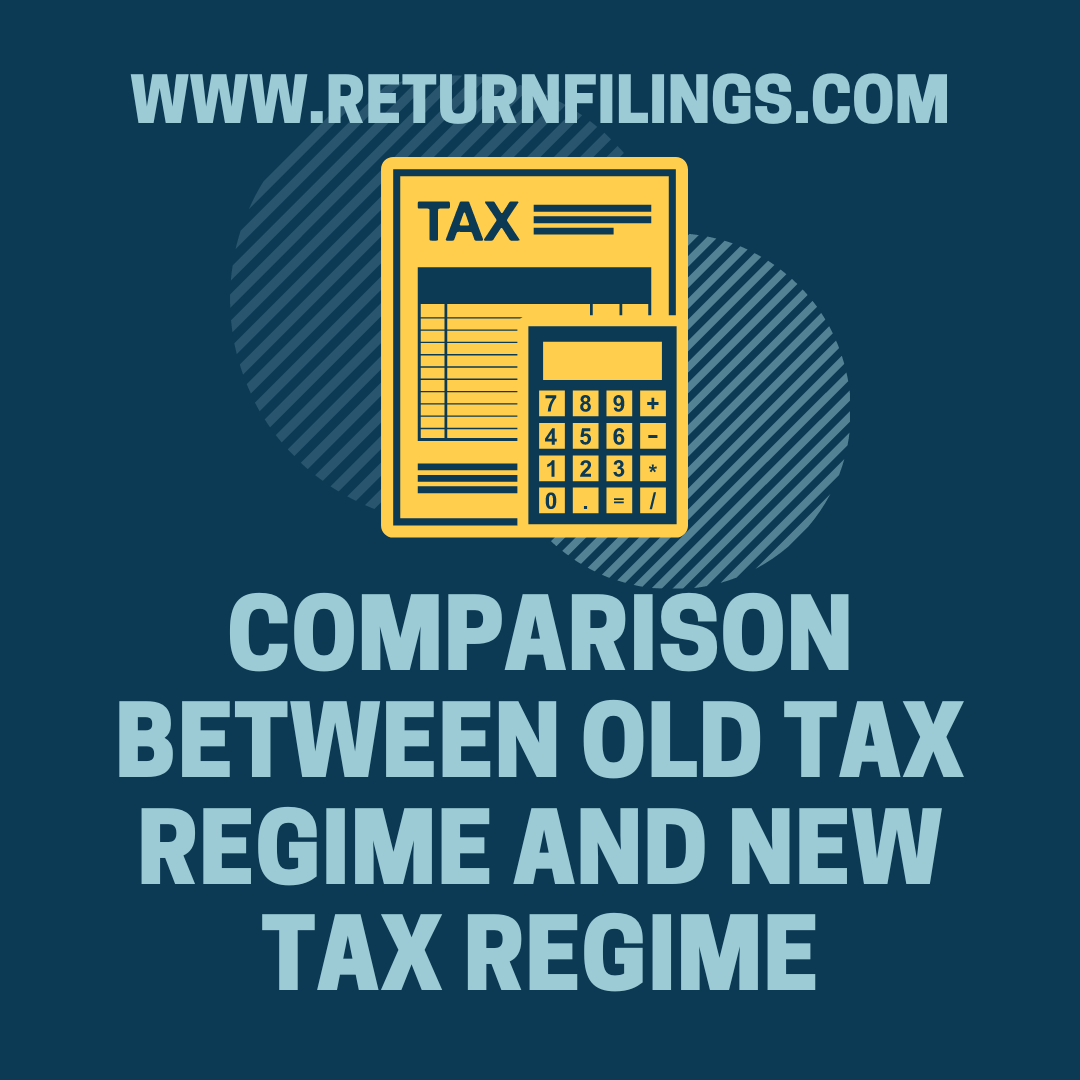The tax landscape in India has undergone significant transformations over the years, with the introduction of the old tax regime and subsequently the new tax regime. Understanding the nuances and differences between these two systems is crucial for taxpayers to make informed decisions about their financial planning. In this comprehensive analysis, we’ll delve into the old and new tax regimes in India, highlighting their key features, differences, and implications.
Introduction to Old Tax Regime:
The old tax regime in India, often referred to as the ‘existing’ or ‘previous’ regime, was characterized by a complex structure of tax rates, deductions, and exemptions. Under this regime, taxpayers were subject to a multitude of tax slabs based on their income levels. Additionally, various deductions and exemptions were available to taxpayers to reduce their taxable income.
Key Features of Old Tax Regime:
पुरानी कर व्यवस्था का परिचय:
भारत में पुरानी कर व्यवस्था, जिसे अक्सर ‘मौजूदा‘ या ‘पिछली‘ व्यवस्था के रूप में जाना जाता है, कर दरों, कटौती और छूट की एक जटिल संरचना की विशेषता थी। इस व्यवस्था के तहत, करदाता अपनी आय के स्तर के आधार पर कई कर स्लैब के अधीन थे। इसके अतिरिक्त, करदाताओं को उनकी कर योग्य आय को कम करने के लिए विभिन्न कटौतियाँ और छूटें उपलब्ध थीं।
पुरानी कर व्यवस्था की मुख्य विशेषताएं:
नई कर व्यवस्था का परिचय:
पुरानी कर व्यवस्था के विपरीत, भारत में नई कर व्यवस्था कर संरचना को सरल बनाने और करदाताओं पर अनुपालन बोझ को कम करने के उद्देश्य से शुरू की गई थी। नई व्यवस्था, जो वित्तीय वर्ष 2020-21 से लागू हुई, कम कर दरों की पेशकश करती है लेकिन अधिकांश कटौती और छूट को समाप्त कर देती है।
नई कर व्यवस्था की मुख्य विशेषताएं:
पुराने कर और नई कर व्यवस्था के बीच अंतर
करदाताओं के लिए निहितार्थ:
निष्कर्ष:
भारत में पुरानी और नई कर व्यवस्थाएं कराधान के लिए अलग-अलग दृष्टिकोण का प्रतिनिधित्व करती हैं, प्रत्येक की अपनी विशेषताएं, निहितार्थ और करदाताओं के लिए विचार हैं। जबकि पुरानी व्यवस्था कई कर स्लैब और कटौतियों के साथ एक जटिल संरचना प्रदान करती है, नई व्यवस्था कम दरों लेकिन कम कटौती और छूट के साथ एक सरलीकृत कर संरचना प्रदान करती है।
अंततः, पुरानी और नई कर व्यवस्थाओं के बीच चयन व्यक्तिगत परिस्थितियों, प्राथमिकताओं और दीर्घकालिक वित्तीय लक्ष्यों पर निर्भर करता है। करदाताओं को प्रत्येक व्यवस्था के निहितार्थों का सावधानीपूर्वक मूल्यांकन करने और उनके हितों के अनुरूप जानकारीपूर्ण निर्णय लेने की आवश्यकता है। कर सलाहकारों या वित्तीय विशेषज्ञों के साथ परामर्श करने से भारत में कर परिदृश्य की जटिलताओं से निपटने में मूल्यवान अंतर्दृष्टि और मार्गदर्शन मिल सकता है।
- Tax Slabs and Rates: The old tax regime featured multiple tax slabs with varying rates, ranging from 0% to 30%, depending on the income level of the taxpayer. As of the last update, the tax slabs were as follows:
- Upto Rs. 2.5 lakh: Nil
- Rs. 2,50,001 to Rs. 5 lakh: 5%
- Rs. 5,00,001 to Rs. 10 lakh: 20%
- Above Rs. 10 lakh: 30%
- Deductions and Exemptions: Taxpayers could claim various deductions and exemptions under different sections of the Income Tax Act to reduce their taxable income. Common deductions included investments in instruments such as Public Provident Fund (PPF), Employee Provident Fund (EPF), life insurance premiums, tuition fees, and home loan interest payments, among others.
- Complexity: The old tax regime was known for its complexity due to the multitude of tax slabs, deductions, and exemptions. Taxpayers often found it challenging to navigate through the intricate provisions of the Income Tax Act and optimize their tax liabilities effectively.
- Flat Tax Rates: One of the defining features of the new tax regime is the introduction of flat tax rates across different income slabs. These rates are relatively lower compared to the corresponding rates in the old regime. As of the last update, the tax rates under the new regime were as follows:
- Upto Rs. 2.5 lakh: Nil
- Rs. 2,50,001 to Rs. 5 lakh: 5%
- Rs. 5,00,001 to Rs. 7.5 lakh: 10%
- Rs. 7,50,001 to Rs. 10 lakh: 15%
- Rs. 10,00,001 to Rs. 12.5 lakh: 20%
- Rs. 12,50,001 to Rs. 15 lakh: 25%
- Above Rs. 15 lakh: 30%
- No Deductions and Exemptions: Unlike the old regime, the new tax regime does not allow most deductions and exemptions under various sections of the Income Tax Act. This includes deductions for investments in provident funds, life insurance premiums, health insurance premiums, house rent allowance (HRA), and others.
- Simplified Structure: The new tax regime aims to simplify the tax structure by eliminating the need for taxpayers to compute their taxable income after accounting for various deductions and exemptions. This streamlines the tax filing process and reduces the compliance burden on taxpayers.
- Optional Choice: It’s important to note that the new tax regime is optional, meaning taxpayers have the flexibility to choose between the old and new regimes based on their individual preferences and financial circumstances. However, once a taxpayer opts for the new regime, they cannot avail most deductions and exemptions available under the old regime.
- Tax Rates and Slabs: While both regimes feature multiple tax slabs, the rates under the new regime are generally lower compared to the corresponding rates in the old regime. This makes the new regime potentially more attractive for taxpayers, especially those in lower income brackets.
- Deductions and Exemptions: Perhaps the most significant difference between the old and new regimes lies in the treatment of deductions and exemptions. While the old regime allows taxpayers to claim various deductions and exemptions to reduce their taxable income, the new regime does away with most of these benefits in favour of lower tax rates.
- Complexity vs. Simplicity: The old regime is often criticized for its complexity due to the multitude of tax slabs, deductions, and exemptions, which can make tax planning and compliance challenging for taxpayers. In contrast, the new regime offers a simpler and more straightforward tax structure with flat rates and fewer complexities.
- Flexibility: The optional nature of the new tax regime provides taxpayers with the flexibility to choose between the old and new regimes based on their individual preferences and financial goals. This allows taxpayers to assess their tax liabilities under both regimes and select the one that offers the most favourable outcome.
- Tax Planning: Taxpayers need to carefully evaluate their financial situation and tax obligations to determine which regime aligns best with their interests. This may involve comparing tax liabilities under both regimes and considering factors such as income level, investment portfolio, and eligibility for deductions.
- Compliance: The introduction of the new tax regime has implications for tax compliance, as taxpayers need to familiarize themselves with the revised tax rates and provisions. Additionally, taxpayers opting for the new regime must ensure that they are not inadvertently foregoing significant deductions and exemptions available under the old regime.
- Investment Decisions: The choice between the old and new tax regimes may influence taxpayers’ investment decisions, as certain tax-saving instruments and deductions are available only under the old regime. Taxpayers opting for the new regime may need to explore alternative investment avenues to optimize their tax planning strategies.
- Long Term Impact: The decision to opt for either the old or new tax regime can have long-term implications for taxpayers’ financial health and tax liabilities. Therefore, it’s essential for taxpayers to conduct thorough analysis and seek professional advice if needed before making a decision.
पुरानी कर व्यवस्था और नई कर व्यवस्था के बीच तुलना
पुरानी कर व्यवस्था और उसके बाद नई कर व्यवस्था की शुरूआत के साथ, भारत में कर परिदृश्य में पिछले कुछ वर्षों में महत्वपूर्ण परिवर्तन हुए हैं। करदाताओं के लिए अपनी वित्तीय योजना के बारे में सूचित निर्णय लेने के लिए इन दोनों प्रणालियों के बीच की बारीकियों और अंतर को समझना महत्वपूर्ण है। इस व्यापक विश्लेषण में, हम भारत में पुरानी और नई कर व्यवस्थाओं पर प्रकाश डालेंगे, उनकी प्रमुख विशेषताओं, अंतरों और निहितार्थों पर प्रकाश डालेंगे।
- कर स्लैब और दरें: पुरानी कर व्यवस्था में करदाता के आय स्तर के आधार पर 0% से 30% तक की अलग–अलग दरों के साथ कई कर स्लैब होते थे। अंतिम अपडेट के अनुसार, टैक्स स्लैब इस प्रकार थे:
- कटौती और छूट: करदाता अपनी कर योग्य आय को कम करने के लिए आयकर अधिनियम की विभिन्न धाराओं के तहत विभिन्न कटौती और छूट का दावा कर सकते हैं। सामान्य कटौतियों में सार्वजनिक भविष्य निधि (पीपीएफ), कर्मचारी भविष्य निधि (ईपीएफ), जीवन बीमा प्रीमियम, ट्यूशन फीस और गृह ऋण ब्याज भुगतान जैसे उपकरणों में निवेश शामिल है।
- जटिलता: पुरानी कर व्यवस्था अनेक टैक्स स्लैब, कटौतियों और छूटों के कारण अपनी जटिलता के लिए जानी जाती थी। करदाताओं को अक्सर आयकर अधिनियम के जटिल प्रावधानों के माध्यम से नेविगेट करना और अपनी कर देनदारियों को प्रभावी ढंग से अनुकूलित करना चुनौतीपूर्ण लगता है।
- फ्लैट कर दरें: नई कर व्यवस्था की परिभाषित विशेषताओं में से एक विभिन्न आय स्लैबों में फ्लैट कर दरों की शुरूआत है। ये दरें पुरानी व्यवस्था में संबंधित दरों की तुलना में अपेक्षाकृत कम हैं। अंतिम अद्यतन के अनुसार, नई व्यवस्था के तहत कर दरें इस प्रकार थीं:
- रुपये 2.5 लाख तक: शून्य
- रु. 2,50,001 से रु. 5 लाख: 5%
- रु. 5,00,001 से रु. 7.5 लाख: 10%
- रु. 7,50,001 से रु. 10 लाख: 15%
- रु. 10,00,001 से रु. 12.5 लाख: 20%
- रु. 12,50,001 से रु. 15 लाख: 25%
- रुपये 15 लाख से ऊपर: 30%
- कोई कटौती और छूट नहीं: पुरानी व्यवस्था के विपरीत, नई कर व्यवस्था आयकर अधिनियम की विभिन्न धाराओं के तहत अधिकांश कटौती और छूट की अनुमति नहीं देती है। इसमें भविष्य निधि, जीवन बीमा प्रीमियम, स्वास्थ्य बीमा प्रीमियम, मकान किराया भत्ता (एचआरए) और अन्य में निवेश के लिए कटौती शामिल है।
- सरलीकृत संरचना: नई कर व्यवस्था का उद्देश्य विभिन्न कटौतियों और छूटों के लिए लेखांकन के बाद करदाताओं को अपनी कर योग्य आय की गणना करने की आवश्यकता को समाप्त करके कर संरचना को सरल बनाना है। यह कर दाखिल करने की प्रक्रिया को सुव्यवस्थित करता है और करदाताओं पर अनुपालन बोझ को कम करता है।
- वैकल्पिक विकल्प: यह ध्यान रखना महत्वपूर्ण है कि नई कर व्यवस्था वैकल्पिक है, जिसका अर्थ है कि करदाताओं को अपनी व्यक्तिगत प्राथमिकताओं और वित्तीय परिस्थितियों के आधार पर पुरानी और नई व्यवस्थाओं के बीच चयन करने की सुविधा है। हालाँकि, एक बार करदाता नई व्यवस्था का विकल्प चुन लेता है, तो वह पुरानी व्यवस्था के तहत उपलब्ध अधिकांश कटौतियों और छूटों का लाभ नहीं उठा सकता है।
- कर दरें और स्लैब: जबकि दोनों व्यवस्थाओं में कई कर स्लैब हैं, नई व्यवस्था के तहत दरें आम तौर पर पुरानी व्यवस्था में संबंधित दरों की तुलना में कम हैं। यह नई व्यवस्था को करदाताओं, विशेषकर निम्न आय वर्ग के लोगों के लिए संभावित रूप से अधिक आकर्षक बनाता है।
- कटौतियाँ और छूट: पुरानी और नई व्यवस्थाओं के बीच सबसे महत्वपूर्ण अंतर कटौती और छूट के उपचार में है। जबकि पुरानी व्यवस्था करदाताओं को अपनी कर योग्य आय को कम करने के लिए विभिन्न कटौतियों और छूटों का दावा करने की अनुमति देती है, नई व्यवस्था कम कर दरों के पक्ष में इनमें से अधिकांश लाभों को खत्म कर देती है।
- जटिलता बनाम सरलता: कर स्लैब, कटौतियों और छूटों की बहुलता के कारण पुरानी व्यवस्था की अक्सर इसकी जटिलता के लिए आलोचना की जाती है, जो करदाताओं के लिए कर योजना और अनुपालन को चुनौतीपूर्ण बना सकती है। इसके विपरीत, नई व्यवस्था समान दरों और कम जटिलताओं के साथ एक सरल और अधिक सीधी कर संरचना प्रदान करती है।
- लचीलापन: नई कर व्यवस्था की वैकल्पिक प्रकृति करदाताओं को उनकी व्यक्तिगत प्राथमिकताओं और वित्तीय लक्ष्यों के आधार पर पुरानी और नई व्यवस्थाओं के बीच चयन करने की लचीलापन प्रदान करती है। इससे करदाताओं को दोनों व्यवस्थाओं के तहत अपनी कर देनदारियों का आकलन करने और सबसे अनुकूल परिणाम देने वाली व्यवस्था का चयन करने की अनुमति मिलती है।
- कर योजना: करदाताओं को यह निर्धारित करने के लिए अपनी वित्तीय स्थिति और कर दायित्वों का सावधानीपूर्वक मूल्यांकन करने की आवश्यकता है कि कौन सी व्यवस्था उनके हितों के साथ सबसे अच्छी तरह मेल खाती है। इसमें दोनों व्यवस्थाओं के तहत कर देनदारियों की तुलना करना और आय स्तर, निवेश पोर्टफोलियो और कटौती के लिए पात्रता जैसे कारकों पर विचार करना शामिल हो सकता है।
- अनुपालन: नई कर व्यवस्था की शुरूआत का कर अनुपालन पर प्रभाव पड़ता है, क्योंकि करदाताओं को संशोधित कर दरों और प्रावधानों से खुद को परिचित करने की आवश्यकता होती है। इसके अतिरिक्त, नई व्यवस्था चुनने वाले करदाताओं को यह सुनिश्चित करना होगा कि वे अनजाने में पुरानी व्यवस्था के तहत उपलब्ध महत्वपूर्ण कटौतियों और छूटों को नहीं छोड़ रहे हैं।
- निवेश निर्णय: पुरानी और नई कर व्यवस्थाओं के बीच चयन करदाताओं के निवेश निर्णयों को प्रभावित कर सकता है, क्योंकि कुछ कर-बचत उपकरण और कटौतियाँ केवल पुरानी व्यवस्था के तहत ही उपलब्ध हैं। नई व्यवस्था का विकल्प चुनने वाले करदाताओं को अपनी कर नियोजन रणनीतियों को अनुकूलित करने के लिए वैकल्पिक निवेश के रास्ते तलाशने की आवश्यकता हो सकती है।
- दीर्घकालिक प्रभाव: पुरानी या नई कर व्यवस्था को चुनने का निर्णय करदाताओं के वित्तीय स्वास्थ्य और कर देनदारियों पर दीर्घकालिक प्रभाव डाल सकता है। इसलिए, करदाताओं के लिए निर्णय लेने से पहले गहन विश्लेषण करना और यदि आवश्यक हो तो पेशेवर सलाह लेना आवश्यक है।
Recent Post
WhatsApp us






